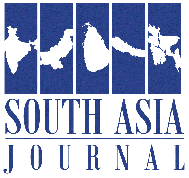
In the uncertainty clouding ties between Bangladesh and India since 5 August, the media in both countries have launched their own war games, sniping at each other at every given opportunity. This has been exacerbated by the recent arrest of a Hindu monk in Dhaka now in jail in Chittagong. A prominent section of Indian media is increasingly vocal about what it calls Bangladesh’s failure to protect its minority Hindu community. Bangladesh—both the media and often the officialdom—is in turn accusing Indian media of disinformation, misinformation and blowing things out of proportion. The acrimony has become so high-pitched, that foreign secretary Vikram Mistri, when he reaches Dhaka to meet with his Bangladesh counterpart Monday, would be well advised to first douse the flames of discord between the rival fourth estates before trying to fix other knotty issues in bilateral ties.
The skirmishing peaked over a recent interview of the press secretary of Chief Adviser Muhammed Yunus by a Delhi-based TV news channel. Its “tone” and the way the guest was allegedly “not allowed” to voice his point of view drew flak from sections of the interim government and journalists in Dhaka. The interview which quizzed the press secretary on reports of attacks on minority Hindus after the arrest of the monk Chinmoy Krishna Das, was rancorous, to say the least.
The attack on minorities has also dominated discussions in Kolkata’s TV studios and they have been heated, almost always one-sided with no representation from across the border and unfettered by the barrier of language. A furious senior BNP leader abused a leading Kolkata anchor, accused his TV channel of accepting bribes from Awami League and labelled it “godi-media”. Paraphrased, he said, “You are creating an anti-Bangladesh narrative today because it has rejected Sheikh Hasina who has robbed it of a huge sum of money. Did you get a share?”
Both Bengali news channels and the Delhi-based ones have sometimes aired blurry videos of unclear provenance, typically shared by a “source” in Bangladesh, of houses in flames purportedly in a Hindu village there. It is possible some of those videos may be doctored but not all are. They paint a grim picture of the Hindu minority under attack across the border. Such intense scrutiny has sparked angry columns in leading Dhaka newspapers about “disinformation” in Indian media and, in its coverage of events after Sheikh Hasina was deposed, and a “disrespect” for Bangladesh that echoes, an editor wrote, “a politician labelling Bangladeshis termites”
However, one unfriendly interview here or there or a dubious video taken from social media should not be the basis for commentators in Dhaka to tar the entire Indian media with the same brush. There is plenty of professional journalism on Bangladesh in leading Indian newspapers, all available online for Dhaka to see. And the Indian media’s right to question what’s happening in the neighbourhood cannot be defended strongly enough. But the term ‘godi-media’ has gained currency across the border along with the suspicion that this brand of media is playing games to further a hidden political agenda
The media in both countries have challenges.
Very few Indian media outlets have full-time journalists posted to Dhaka, if any. Ditto for Dhaka journalists in Delhi. So, news comes second-hand, as it were, from agencies or other sources, enabling fake news to slip in. Like the viral videos showing a group of men breaking an idol of Goddess Kali or of one man with a heavily bandaged head in hospital, both purportedly in Bangladesh. Fact-checkers in Delhi and Dhaka found the clips were genuine but the stories spun around them were mischievous and fake.
The media animosity is trickling down and impacting ordinary folk. The suspicion and hostility culminated in the assault on the Bangladesh deputy high commission in Agartala and is prompting hotel owners, doctors, entire hospitals and other service providers in border towns to shut their doors on visitors from Bangladesh. The latest: Reports of a call to boycott a popular Bangladeshi Rabindra Sangeet exponent who is due to hold a show near Kolkata on 28 December.
How much worse can things get?
In all of this, I am reminded of a great debate that erupted in the US in 2001, the year of 9/11. The question was, in a crisis like the one that befell that country, is a journalist a journalist first or a patriot? The Twin Tower attack triggered a surge of patriotism across the country and in the media. Many TV anchors and reporters went on air with pins resembling the US flag on their ties or jacket lapels. But at a TV station run by the School of journalism in Missouri University, Columbia, where I happened to be at that time, the news director ran into trouble for banning on-air talent from wearing any such pins on their person during a broadcast. For him, the answer was simple: a journalist is always a journalist first and then a patriot.
Today, in this subcontinent, journalists could take a lesson from this tale and resist becoming part of the problem they are entrusted to dispassionately dissect. Let journalists not engage as warriors but as watchdogs of democracy. No good comes of being more loyal than the king.
source : theprint
